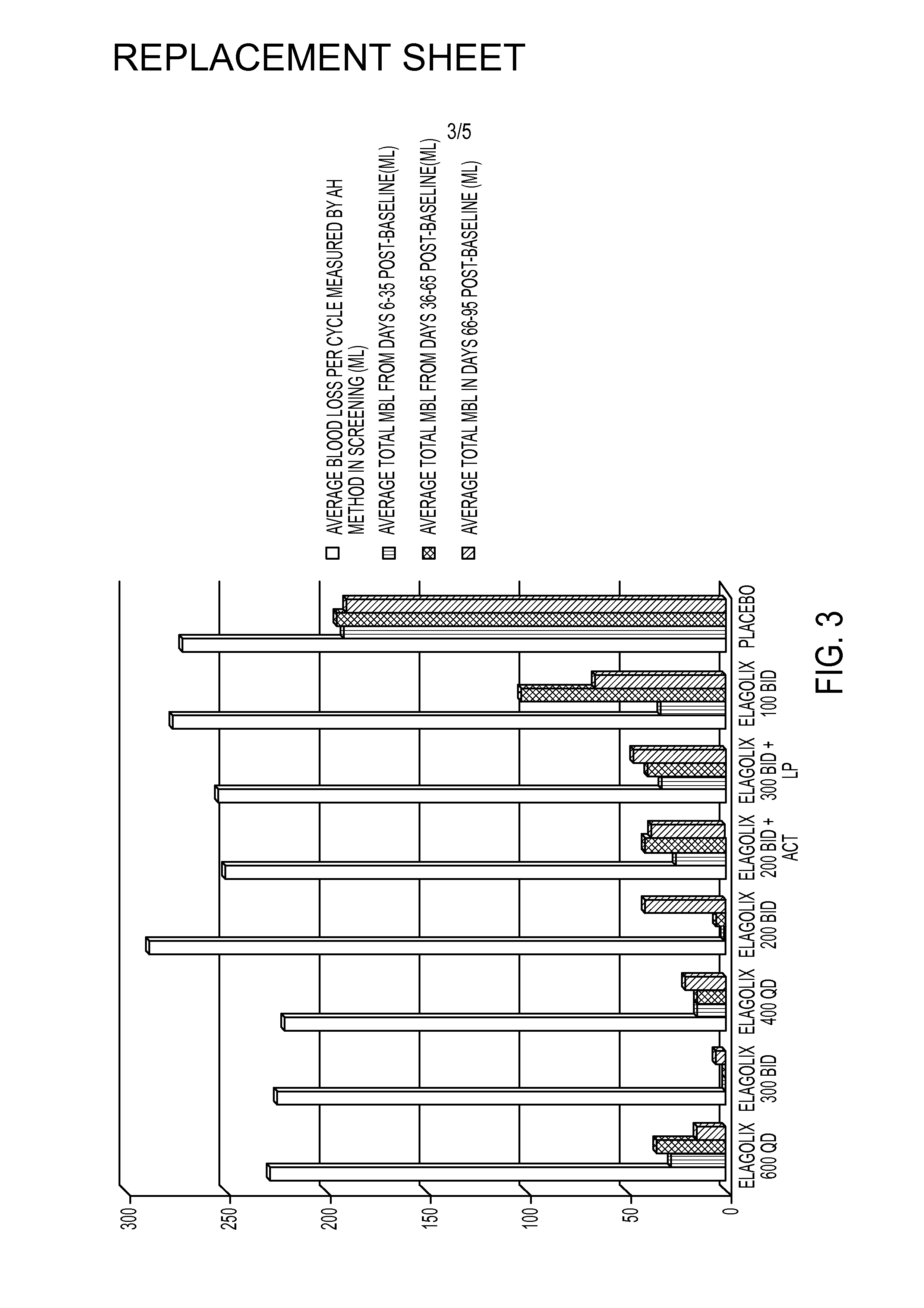Methods of treating heavy menstrual bleeding
- Summary
- Abstract
- Description
- Claims
- Application Information
AI Technical Summary
Benefits of technology
Problems solved by technology
Method used
Image
Examples
example 1
[0218]This example is a Phase 2a, multicenter, double-blind, placebo-controlled, randomized trial (N=280) with a 3-month treatment duration evaluating the safety and efficacy of Elagolix administered with or without Activella® in premenopausal women with uterine fibroids.
[0219]It evaluates the safety and efficacy of 6 doses of Elagolix (100 mg BID, 200 mg BID, 200 mg BID plus low dose Activella® (a combination of 0.5 mg estradiol and 0.1 mg northindrone acetate), 300 mg BID, 300 mg BID plus 1.0 mg of Estrace and 200 mg cyclical Prometrium (collectively referred to as “EP”), 400 mg QD and 600 QD) versus placebo (PBO) to reduce uterine bleeding associated with uterine fibroids and to reduce fibroid volume and uterine volume in premenopausal women 20 to 49 years of age with heavy menstrual bleeding (HMB; >80 mL blood loss per menstrual cycle). The study involved the following six (6) cohorts:
[0220]Cohort 1: Elagolix 200 mg BID or placebo (PBO).
[0221]Cohort 2: Elagolix 300 mg BID or pla...
PUM
| Property | Measurement | Unit |
|---|---|---|
| Time | aaaaa | aaaaa |
| Time | aaaaa | aaaaa |
| Time | aaaaa | aaaaa |
Abstract
Description
Claims
Application Information
 Login to View More
Login to View More - R&D
- Intellectual Property
- Life Sciences
- Materials
- Tech Scout
- Unparalleled Data Quality
- Higher Quality Content
- 60% Fewer Hallucinations
Browse by: Latest US Patents, China's latest patents, Technical Efficacy Thesaurus, Application Domain, Technology Topic, Popular Technical Reports.
© 2025 PatSnap. All rights reserved.Legal|Privacy policy|Modern Slavery Act Transparency Statement|Sitemap|About US| Contact US: help@patsnap.com



